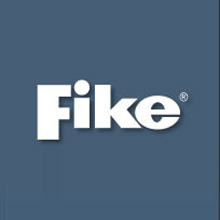 |
| Fike's LPCB-approved detectors offer a choice of fifteen combinations of heat and smoke detection modes |
LPCB approval has now been awarded to the popular Duonet and Quadnet ranges of addressable fire control panels from fire protection expert Fike, providing independent confirmation that these versatile panels meet and will continue to meet the requirements of EN54, the key European standard relating to components used in fire alarm systems.
Approval for its addressable panels means that Fike now offers a complete portfolio of LPCB-approved equipment, which includes manual call points as well as detectors, sounders, beacons and panels for two-wire and addressable installations.
The Duonet and Quadnet panels, which were awarded LPCB approval only after exhaustive and rigorous third-party testing, are simple to install and offer intuitive operation in both normal and emergency situations. In particular, the panels incorporate large, easy-to-read displays, showing detailed information such as detector locations, without potentially confusing abbreviations.
Ideal for use in small and medium sized fire protection installations of all types, Duonet and Quadnet panels feature compact construction and an unobtrusive, aesthetically pleasing design that is the perfect complement for modern architecture and décor.
The Duonet panels support two addressable loops while the Quadnet panels support up to four, with up to 200 devices on each loop. When loop-powered devices are used, each loop can typically support up to 110 detectors with integral sounders or up to 60 detectors with integral sounders and strobe lights.
Used in conjunction with Fike’s LPCB-approved multifunction detectors, Duonet and Quadnet panels offer a further decisive benefit – a remote configuration facility that allows the operating mode of individual detectors to be set up and changed from the panel.
In addition, the detectors offer a choice of fifteen combinations of heat and smoke detection modes, making it easy to accurately match the operation of an installation to the user’s exact requirements, and can be easily changed anytime during the lifetime of the system installed.




